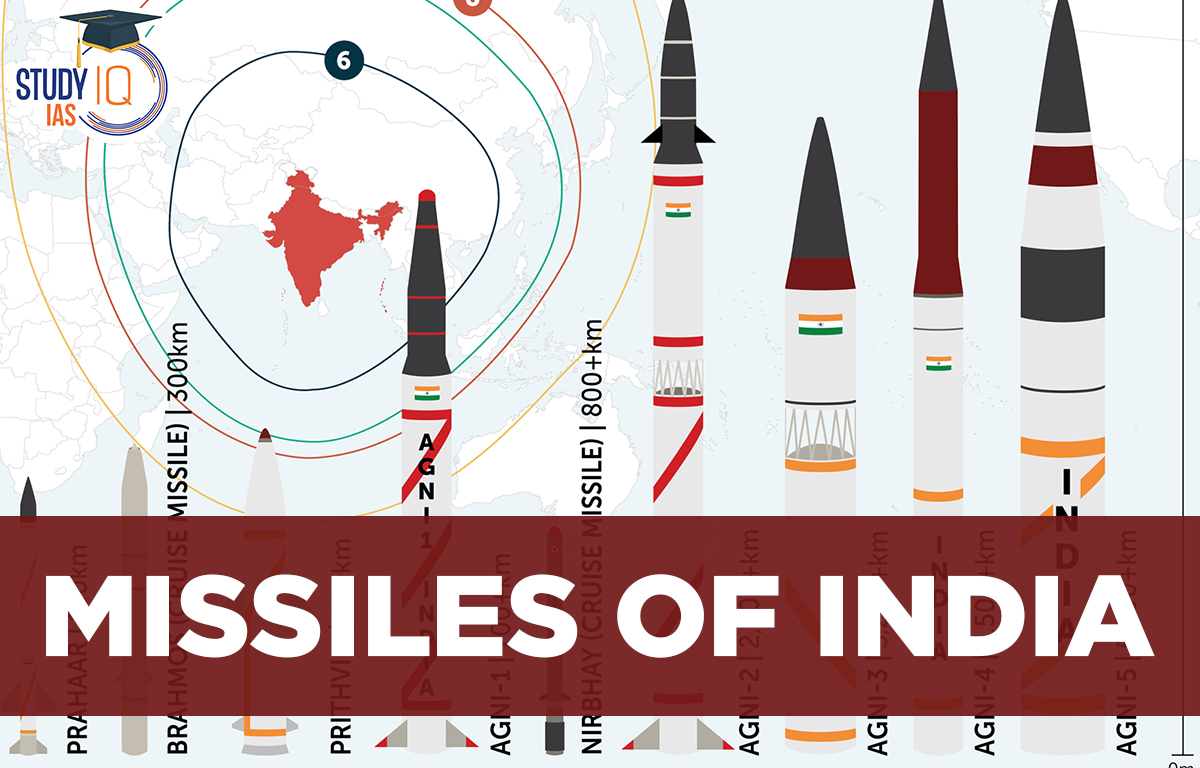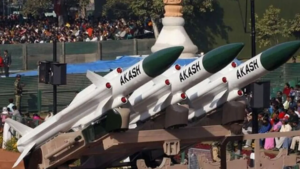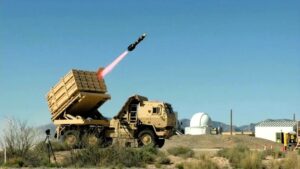India’s missile program is a reflection of the country’s increasing technological and strategic prowess. Under the auspices of the Defence Research and Development Organisation (DRDO), the Missiles of India inventory consists of a wide variety of ballistic, cruise, and anti-aircraft missiles intended for a variety of defence and deterrence purposes.
From the short-range Prithvi to the intercontinental Agni-V, and precision-guided systems like BrahMos, India has made impressive contributions in beefing up its defence infrastructure and projecting itself as a prominent actor in world missile technology. Check here the List of Missiles of India and their Types in detail.
Missiles of India
A missile is also referred to as a guided missile in military jargon. A guided missile is a self-propelled flying weapon that is typically driven by a fighter jet engine or rocket motor. An object that can be launched, shot, or pushed toward a target is referred to as a missile in everyday speech. The Missiles of India are used for a variety of defence-related reasons. Fundamentally, its arsenal of ballistic missiles serves as a platform for the delivery of nuclear weapons to both China and Pakistan.
India’s development of longer-range ballistic missiles and its diversification of its delivery vehicles beyond mobile land-based missiles are both driven by military requirements. In the age of modernity, India is working with Russia to develop cruise missiles and ship-launched ballistic missiles in order to become a strong country. In most competitive tests, the defence is a significant and engaging component that is combined with the General Knowledge section.
Types of Missiles of India
India has a multifaceted and rapidly expanding arsenal of missiles, distinguished by factors such as the type of launch platform, range, and target. The following is a list of major categories of missiles of India:
| Type |
Details |
| Based on Launch Platform |
- Surface-to-Surface Missiles (SSM)
- Surface-to-Air Missiles (SAM)
- Air-to-Air Missiles (AAM)
- Air-to-Surface Missiles (ASM)
- Sea-to-Sea Missiles
- Sea-to-Surface Missiles
- Submarine-Launched Ballistic Missiles (SLBM)
- Anti-Tank Guided Missiles (ATGM)
|
| Based on Trajectory |
- Ballistic Missiles
- Cruise Missiles
|
| Based on Range |
- Short-Range Ballistic Missiles (SRBM)
- Medium-Range Ballistic Missiles (MRBM)
- Intermediate-Range Ballistic Missiles (IRBM)
- Intercontinental Ballistic Missiles (ICBM)
- Tactical Missiles
|
| Based on Speed |
- Subsonic Missiles
- Supersonic Missiles
- Hypersonic Missiles
|
| Based on the Guidance System |
- Different guidance systems are used, such as inertial navigation, active radar homing, infrared homing, laser guidance, and GPS/NavIC.
|
| Based on Warhead |
- Missiles may be equipped with conventional (high explosives) or strategic (nuclear) warheads, based on their intended use.
|
List of Missiles in India
Check here the complete List of Missiles in India, categorised by their types:
Air-to-Air missiles
| Name of the Missile |
Type |
Range |
| MICA |
Short to medium-range |
500 m to 80 km |
| Astra |
Beyond Visual Range |
80-110 km |
| Novator K-100 |
Medium-range air-to-air missile |
300–400 km |
Surface-To-Air Missiles
| Name of the Missile |
Type |
Range |
| Trishul |
Short-range surface-to-air missile |
9 km |
| Akash Missile |
Medium-range surface-to-air missile |
30-35km |
| Barak 8 |
Long-Range Surface-to-Air Missile (developed with Israel) |
100 km |
| Quick Reaction Surface-to-Air Missile (QRSAM) |
Short-range |
|
| VL-SRSAM |
Vertical Launch Short Range Surface-to-Air Missile |
|
| SAMAR Air Defence System |
Short/Medium-Range Air Defence System |
|
| Prithvi Air Defence (PAD) |
Exo-atmospheric interceptor |
Altitude- 80km (high altitude) |
| Advanced Air Defence (AAD)/Ashwin |
Endo-atmospheric interceptor |
Altitude- 120km (lower altitude) |
| Prithvi Defence Vehicle (PDV) |
Exo-atmospheric interceptor |
Altitude- 30km |
Surface-to-Surface Missiles (Ballistic Missiles)
| Name of the Missile |
Type |
Range |
| Agni Series |
| Agni-I |
Short-range ballistic missile |
700-1250 km |
| Agni-II |
Medium-range ballistic missile |
2,000–3,000 km |
| Agni-III |
Intermediate-range ballistic missile |
3,500 km – 5,000 km |
| Agni-IV |
Intermediate-range ballistic missile |
3,000 – 4,000 km |
| Agni-V |
Intercontinental ballistic missile |
5000 – 8000 Km |
| Agni-P (Agni Prime) |
Medium-range ballistic missile |
1,000-2,000 km |
| Agni-VI |
Intercontinental ballistic missile |
under development, potential range up to 16,000 km |
| Prithvi Series |
| Prithvi I |
Short-Range Ballistic Missile |
150 km (being withdrawn) |
| Prithvi II |
Short-Range Ballistic Missile |
350 km (being withdrawn) |
| Prithvi-III |
Short-Range Ballistic Missile |
350-600 km (in service) |
| Other Missiles |
| Dhanush |
Short-Range Ballistic Missile |
350 – 600 km |
| Shaurya |
Medium-Range Ballistic Missile |
750 to 1,900 km |
| Prahaar |
Short-Range Ballistic Missile |
150 km |
| Pralay |
Short-range surface-to-surface tactical ballistic missile |
150-500 km |
Cruise Missiles
| Name of the Missile |
Type |
Range |
| BrahMos |
Supersonic cruise missile |
290-500 km |
| BrahMos II |
Hypersonic cruise missile |
300km |
| Nirbhay |
Subsonic cruise missile |
1,000 -1500 km |
| Indigenous Technology Cruise Missile (ITCM) |
Under development |
|
Submarine Launched Ballistic Missiles (SLBM)
| Name of the Missile |
Type |
Range |
| Ashwin |
Ballistic Missile |
150-200km |
| Sagarika (K-15) |
Short-range Ballistic Missile |
700 – 1900 Km |
| K-4 |
Medium-range Ballistic Missile |
3,500–5,000 km |
| K-5 |
Intermediate-range Ballistic Missile |
5000-6,000 km |
Anti-Tank Guided Missile (ATGM)
| Name of the Missile |
Type |
Range |
| Amogha |
Short-range Anti-Tank Guided Missile |
2.8 km |
| Nag |
Fire-and-forget Anti-Tank Guided Missile |
4-10 km |
| Helina/Dhruvastra |
Helicopter-launched Nag |
7-10 km |
| Man-Portable Anti-Tank Guided Missile (MPATGM) |
Short-range |
|
Missiles of India: Important Facts for UPSC
- The 1983 launch of the Integrated Guided Missile Development Program (IGMDP).
- The goal of this programme was to build the Trishul, Akash, Nag, Prithvi, and Agni-I missile systems in the nation.
- The intermediate-range surface-to-surface missiles mentioned above.
- The “Missile Woman” of India is Tessy Thomas, an Indian scientist who serves as the Director General of Aeronautical Systems and the former Project Director for the Agni-IV missile in the Defence Research and Development Organisation (DRDO).
- Prithvi was the nation’s first surface-to-surface missile with a single stage and liquid fuel.
Sharing is caring!


 Misinformation and Disinformation Threat...
Misinformation and Disinformation Threat...
 Akash Missile System: India’s Indigeno...
Akash Missile System: India’s Indigeno...
 List Of Top 10 Air Defence Systems In Th...
List Of Top 10 Air Defence Systems In Th...





















